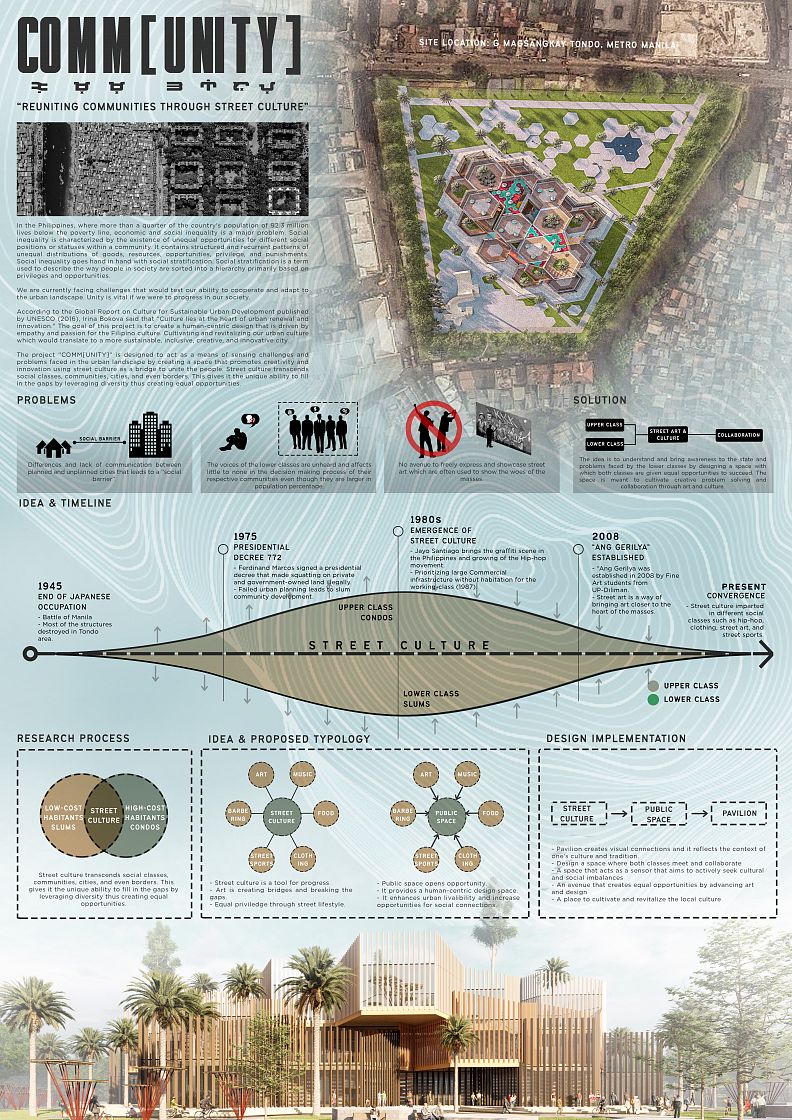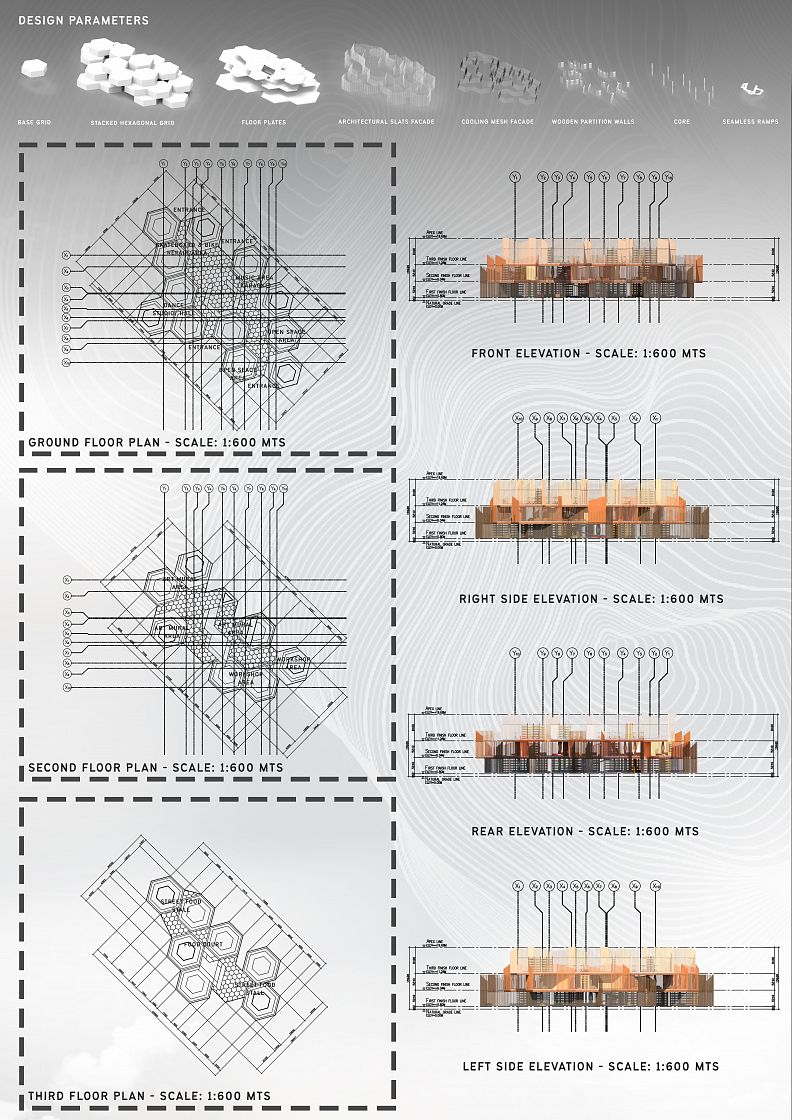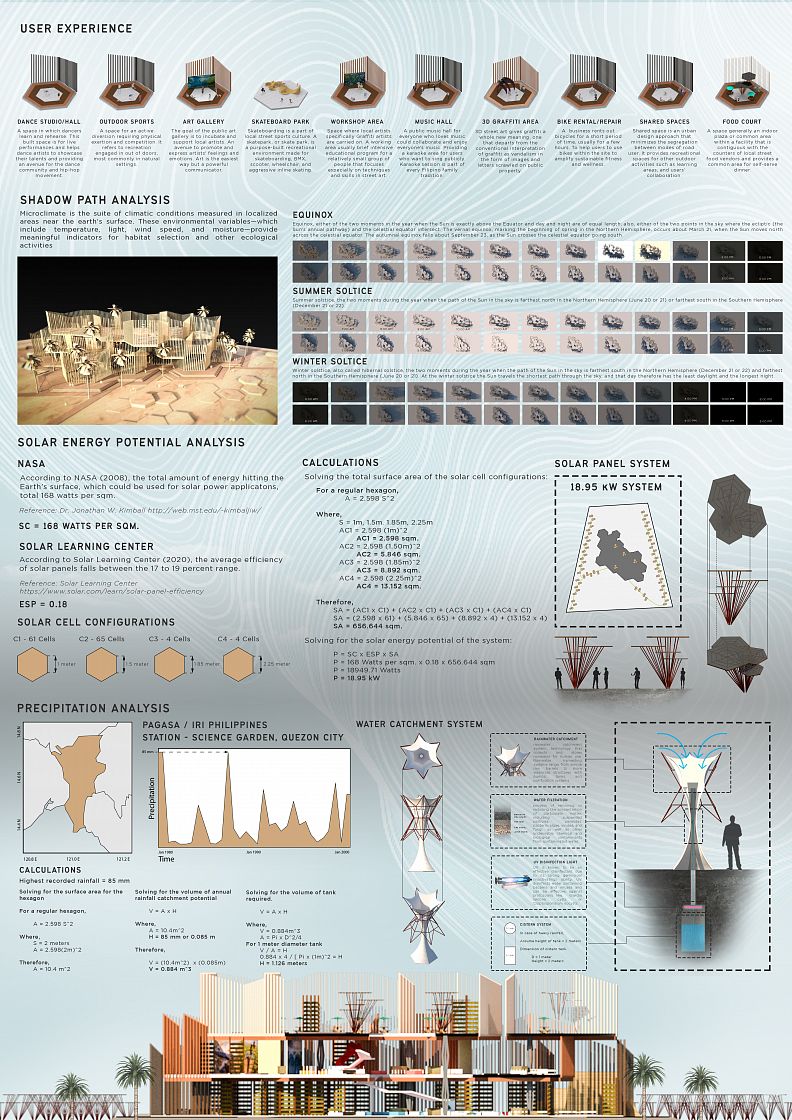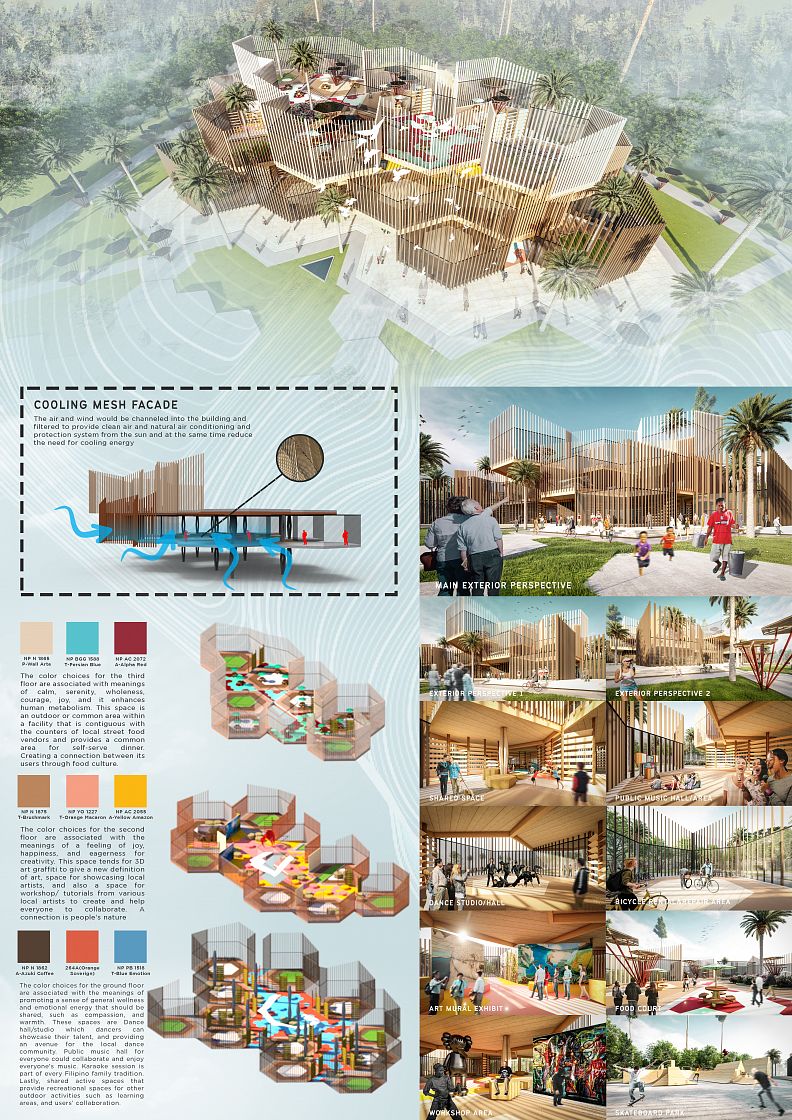COMMU[UNITY]: Reuniting Communities through Street Culture

Project idea
Problems:
1. Differences and lack of communication between planned and unplanned cities that lead to a “social barrier”.
2. The voices of the lower classes are unheard and affect little to none in the decision-making process of their respective communities even though they are larger in population percentage.
3. No avenue to freely express and showcase street art which is often used to show the woes of the masses.
Solution:
The idea is to understand and bring awareness to the state and problems faced by the lower classes by designing a space with which both classes are given equal opportunities to succeed. Space is meant to cultivate creative problem solving and collaboration through art and culture.
Research Process:
Street culture transcends social classes, communities, cities, and even borders. This gives it the unique ability to fill in the gaps by leveraging diversity thus creating equal opportunities.
Idea & Proposed Typology:
- Street culture is a tool for progress.
- Art is creating bridges and breaking the gaps.
- Equal privilege through street lifestyle.
- Public space opens opportunities.
- It provides a human-centric design space.
- It enhances urban livability and increases opportunities for social connections.
Design Implementation:
- Pavilion creates visual connections and it reflects the context of one’s culture and tradition.
- Design a space where both classes meet and collaborate
- A space that acts as a sensor that aims to actively seek cultural and social imbalances
- An avenue that creates equal opportunities by advancing the art
and design
- A place to cultivate and revitalize the local culture.
Project description
In the Philippines, where more than a quarter of the country's population of 92.3 million lives below the poverty line, economic and social inequality is a major problem. Social inequality is characterized by the existence of unequal opportunities for different social positions or statuses within a community. It contains structured and recurrent patterns of unequal distributions of goods, resources, opportunities, privileges, and punishments. Social inequality goes hand in hand with social stratification. Social stratification is a term used to describe the way people in society are sorted into a hierarchy primarily based on privileges and opportunities.
We are currently facing challenges that would test our ability to cooperate and adapt to the urban landscape. Unity is vital if we were to progress in our society.
According to the Global Report on Culture for Sustainable Urban Development published by UNESCO (2016), Irina Bokova said that “Culture lies at the heart of urban renewal and innovation." The goal of this project is to create a human-centric design that is driven by empathy and passion for the Filipino culture. Cultivating and revitalizing our urban culture which would translate to a more sustainable, inclusive, creative, and innovative city.
The project “COMM[UNITY]” is designed to act as a means of sensing challenges and problems faced in the urban landscape by creating a space that promotes creativity and innovation using street culture as a bridge to unite the people. Street culture transcends social classes, communities, cities, and even borders. This gives it the unique ability to fill in the gaps by leveraging diversity thus creating equal opportunities.
Technical information
Solar Panel System - Providing different solar cell configurations depending on the location throughout the site to utilize and maximize the solar sun capture. (See board 3 for more details)
Rainwater catchment System - rainwater catchment system, technology that collects and stores rainwater for human use. Rainwater harvesting systems range from simple rain barrels to more elaborate structures with pumps, tanks, and purification systems. (See board 3 for more details)
Cooling Mesh Facade - The air and wind would be channeled into the building and filtered to provide clean air and natural air conditioning and protection system from the sun and at the same time reduce the need for cooling energy
Color used:
1. The color choices for the ground floor are associated with the meanings of promoting a sense of general wellness and emotional energy that should be shared, such as compassion, and warmth. These spaces are Dance halls/studios, where dancers can showcase their talent and provide an avenue for the local dance community. Public music hall for everyone could collaborate and enjoy everyone's music. Karaoke session is part of every Filipino family tradition. Lastly, shared active spaces that provide recreational spaces for other outdoor activities such as learning areas, and users’ collaboration.
2. The color choices for the second floor are associated with the meanings of a feeling of joy, happiness, and eagerness for creativity. This space tends for 3D art graffiti to give a new definition of art, space for showcasing local artists, and also a space for workshop/ tutorials from various local artists to create and help everyone to collaborate. A connection is people's nature
3. The color choices for the third floor are associated with meanings of calm, serenity, wholeness, courage, joy, and it enhances human metabolism. This space is an outdoor or common area within a facility that is contiguous with the counters of local street food vendors and provides a common area for self-serve dinner. Creating a connection between its users through food culture.





